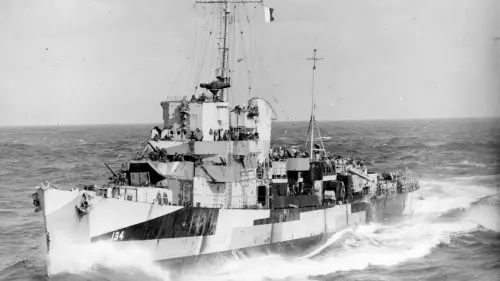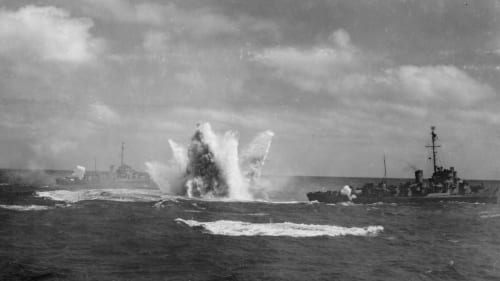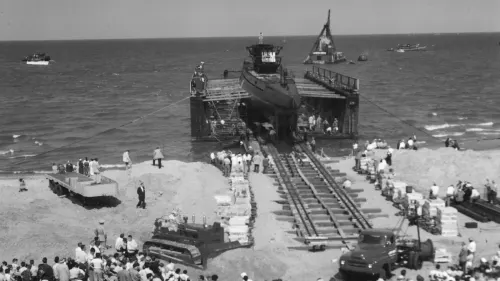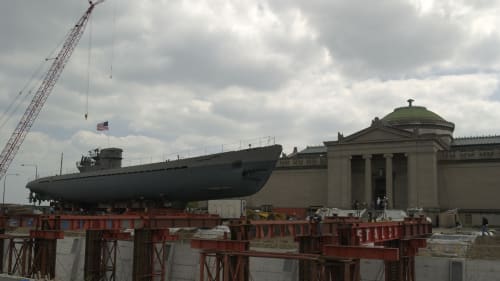War begins
Only two decades after the end of World War I, tensions were again mounting across the globe. The Fascist dictator Adolf Hitler had risen to power in Germany and was brazenly taking over parts of Austria and Czechoslovakia — in defiance of the sanctions his country faced after losing WWI. Meanwhile, another Fascist dictator, Benito Mussolini, had ascended to power in Italy. In the Far East, Japan was in the midst of an aggressive campaign against China.
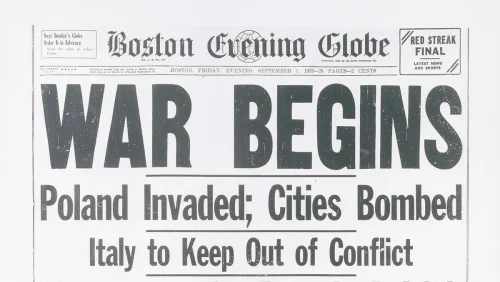
World at war
In July 1940, Germany focused its wrath on Britain. First, the German Luftwaffe (air force) attacked the airfields of Britain's Royal Air Force. The next month, Hitler declared a total blockade of Britain to prevent supplies from entering the country. Then, in September 1940, Hitler ordered an all-out bombing campaign against London. The outlook for Europe darkened on September 27, 1940, when Germany, Italy and Japan signed the Tripartite Act, uniting their forces into the Axis Powers.
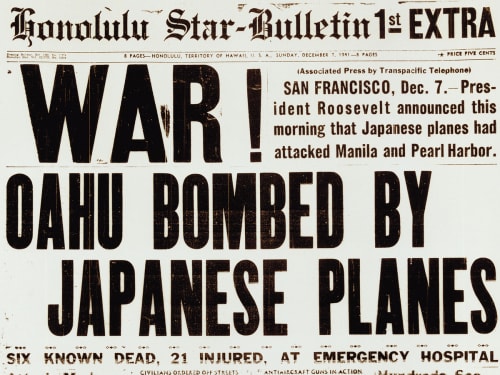
U-Boat menace
U-boats were designed to spend most of their time above water, where lookouts scanned the horizon for telltale smoke from merchant ship smokestacks. Once a ship was spotted, the captain submerged his U-boat and stalked his prey using a periscope to peer above the waves. When the captain shouted "Fire One!" the U-boat crew launched a torpedo toward the doomed ship. Seconds later, the torpedo would explode violently into the merchant ship, ripping a jagged hole in its hull. Seawater flooded in, as fires started secondary explosions that rocked the ship. Crewmembers ran for their lives, trying to abandon ship before being dragged to the bottom of the icy sea. Most didn't survive.
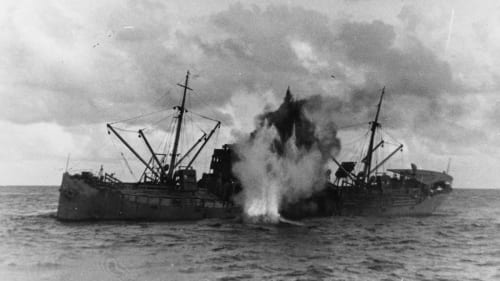
Captain Dan Gallery
"I Think We Can Capture a U-Boat"
The U.S. Navy selected Captain Daniel V. Gallery, Jr. to be commander of the Hunter-Killer Task Group 22.3. He had the perfect background for the job. In September 1943, Gallery returned to the U.S. and was appointed commander of USS Guadalcanal. In January 1944, he led USS Guadalcanal in Task Group 21.12, which sank three German Submarines: U-544, U-515, and U-68. During his last antisubmarine patrol with Task Group 21.12, Gallery began to think it might be possible to capture a U-boat. It would be a monumental feat and provide the Allies with secret German naval technologies including U-boat torpedo guidance systems, communication codes and the attack tactics used by U-boats. Upon returning to the U.S. in April of 1944, Gallery ordered each ship in the Task Group to prepare a plan for capturing, boarding and towing a U-boat. The boarding parties began their training exercises immediately, though there were many unknowns in preparing for something that had never been done before. In May of 1944, the Hunter-Killer Task group 22.3, with Gallery in command, set sail into the Atlantic with authorization to capture a U-boat, if possible.
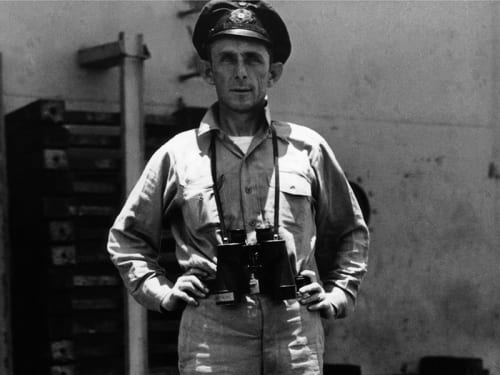
Intelligence
The top secret tenth fleet
The U.S. Navy knew that capturing a U-boat would require more than firepower. The mission also had to be backed by the power of intelligence. When Task Group 21.12 returned from its second antisubmarine patrol in April 1944, Captain Gallery gained admittance to the 10th Fleet, code name for the U.S. navy's antisubmarine intelligence command in Washington, D.C. At the heart of the operation was F-21: the U-boat tracking room. There, Gallery met Commander Kenneth Knowles, who gave Gallery top-secret information about the inner workings of German U-boats. Knowles and his 10th Fleet team had been tracking a target U-boat since March of 1944, when the sub cast off from Brest, France and headed south toward Africa. The exact identity of the U-boat was unknown, but Knowles determined it was probably an older sub with a three-month duration at sea. Task Group 22.3 would have until the end of May to capture the U-boat before it made its way home.
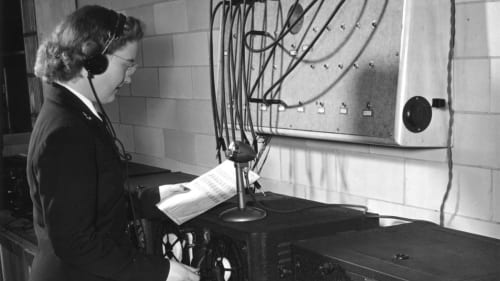
This riveting wartime story comes alive
Experience the only German sub in the U.S. in this dramatic exhibit and national war memorial to American sailors.
